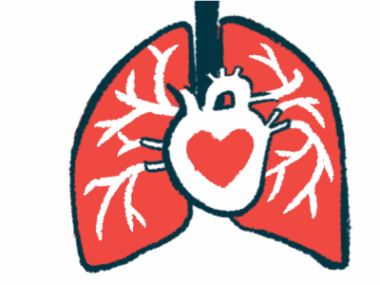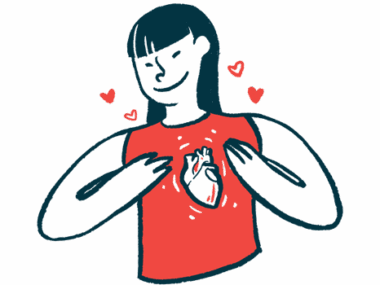Prognosis for cardiac sarcoidosis tied to heart condition at diagnosis
Data may explain worse prognosis for those with isolated cardiac sarcoidosis
Written by |

The prognosis for people with cardiac sarcoidosis may depend on the condition of their heart at diagnosis and not on whether other organs are also affected, a study in Japan suggests.
Isolated cardiac sarcoidosis, where the disease is limited to the heart, is a significant risk factor for worse prognosis, but this association was lost when adjusted for other potential influencing factors, researchers found.
It can be difficult to make a diagnosis of cardiac sarcoidosis because its symptoms may not manifest until the disease is in an advanced stage, especially when no organs other than the heart are involved.
“Early detection of iCS [isolated cardiac sarcoidosis] is critical, although there are fewer opportunities to suspect the disease before symptoms appear,” Daichi Maeda, PhD, one of the study’s co-corresponding authors and an associate professor at Juntendo University, in Japan, said in a university press release.
Researchers hope study helps to develop early diagnostic tool
“We hope that our current study facilitates the development of an early diagnostic tool for CS [cardiac sarcoidosis] and that researchers around the world engage in studies on CS,” Maeda said.
The data were detailed in the study “Clinical characteristics and prognosis of patients with isolated cardiac sarcoidosis: Insights from the ILLUMINATE-CS study,” which was published in the European Journal of Heart Failure.
Sarcoidosis occurs when inflammatory immune cells clump together into clusters called granulomas. Granulomas usually form in the lungs and lymph nodes but can occur anywhere in the body and interfere with the way it works.
In up to 10% of people with sarcoidosis, granulomas form in the heart, making it beat irregularly and pump blood less efficiently. This can lead to serious complications such as arrhythmias (irregular heartbeats) and heart failure.
Cardiac sarcoidosis can be isolated or systemic, depending on whether it affects any organs besides the heart. What’s puzzling is that people with isolated cardiac sarcoidosis reportedly have worse heart disease and prognosis.
To understand this paradox, Maeda and colleagues compared the clinical characteristics and prognosis of isolated versus systemic CS using data from ILLUMINATE-CS (UMIN000034974), a large multicenter registry study of people with cardiac sarcoidosis in Japan.
Among a total of 475 adults (mean age of 62 years), most (74.9%) had systemic cardiac sarcoidosis and 119 (25.1%) were diagnosed with isolated cardiac sarcoidosis. The proportion of men was significantly higher in the isolated CS group (47.9% vs. 32%).
The conditions at the time of diagnosis determine a patient’s prognosis rather than whether they have iCS [isolated cardiac sarcoidosis] or sCS [systemic cardiac sarcoidosis].
People with iCS more likely to have history of heart failure, irregular heartbeat
At the beginning of the study, people with isolated cardiac sarcoidosis were significantly more likely than those with systemic CS to have a history of heart failure (31.3% vs. 17.9%) and atrial fibrillation, an irregular and often rapid heartbeat (22.7% vs. 6.3%).
Those in the isolated CS group also had significantly lower left ventricular ejection fraction (LVEF), indicating worse ability of the heart’s left bottom chamber to pump oxygen-rich blood to the body (41.7% vs. 50%). They were more likely to have a defibrillator, a device that gives an electric charge to the heart to restore its rhythm, than those in the systemic CS group (21.4% vs. 6.4%).
Patients were followed for a median of 42.3 months (about 3.5 years). During this period, none of the people with isolated cardiac sarcoidosis progressed to systemic disease. This may be related to the fact that most patients (88.6%) were prescribed corticosteroids, a type of steroid, after diagnosis, the researchers noted.
No significant group differences were observed in terms of heart imaging findings and use and response to steroids, a type of anti-inflammatory and immunosuppressive treatment.
Next, the team assessed how many patients reached a combined outcome of all-cause death, hospitalization for heart failure, and fatal ventricular arrhythmias during follow-up.
Results showed 141 patients (29.7%) experienced at least one of those outcomes: 100 with systemic CS and 41 with isolated CS. This meant that a significantly greater proportion of isolated CS patients met the combined outcome relative to those with systemic CS (34.5% vs. 28.1%).
Statistical models showed isolated cardiac sarcoidosis was significantly associated with a higher likelihood of achieving the combined outcome. However, the link no longer held statistical significance when the model was adjusted for other potential influencing factors, such as LVEF.
Poor outcomes for iCS patients may reflect poor clinical condition at diagnosis
These findings highlight that “patients with iCS had more cardiovascular complications and lower LVEF at the time of diagnosis as compared to patients with sCS [systemic cardiac sarcoidosis],” and that “iCS was significantly associated with poor prognosis in the unadjusted model, although this relationship was not retained after adjustment for other [risk] factors,” the team wrote.
“Patients with iCS seemed to have poor outcomes, which may simply reflect their poor clinical condition at the time of diagnosis,” the researchers wrote.
“Once the patients show decreased LVEF or experience [heart-related] events, the possibility of CS should be investigated so that they can be treated with an immunosuppressive therapy, including steroids,” the researchers concluded.
Overall, the “findings suggest that the conditions at the time of diagnosis determine a patient’s prognosis rather than whether they have iCS or sCS,” Maeda said.







